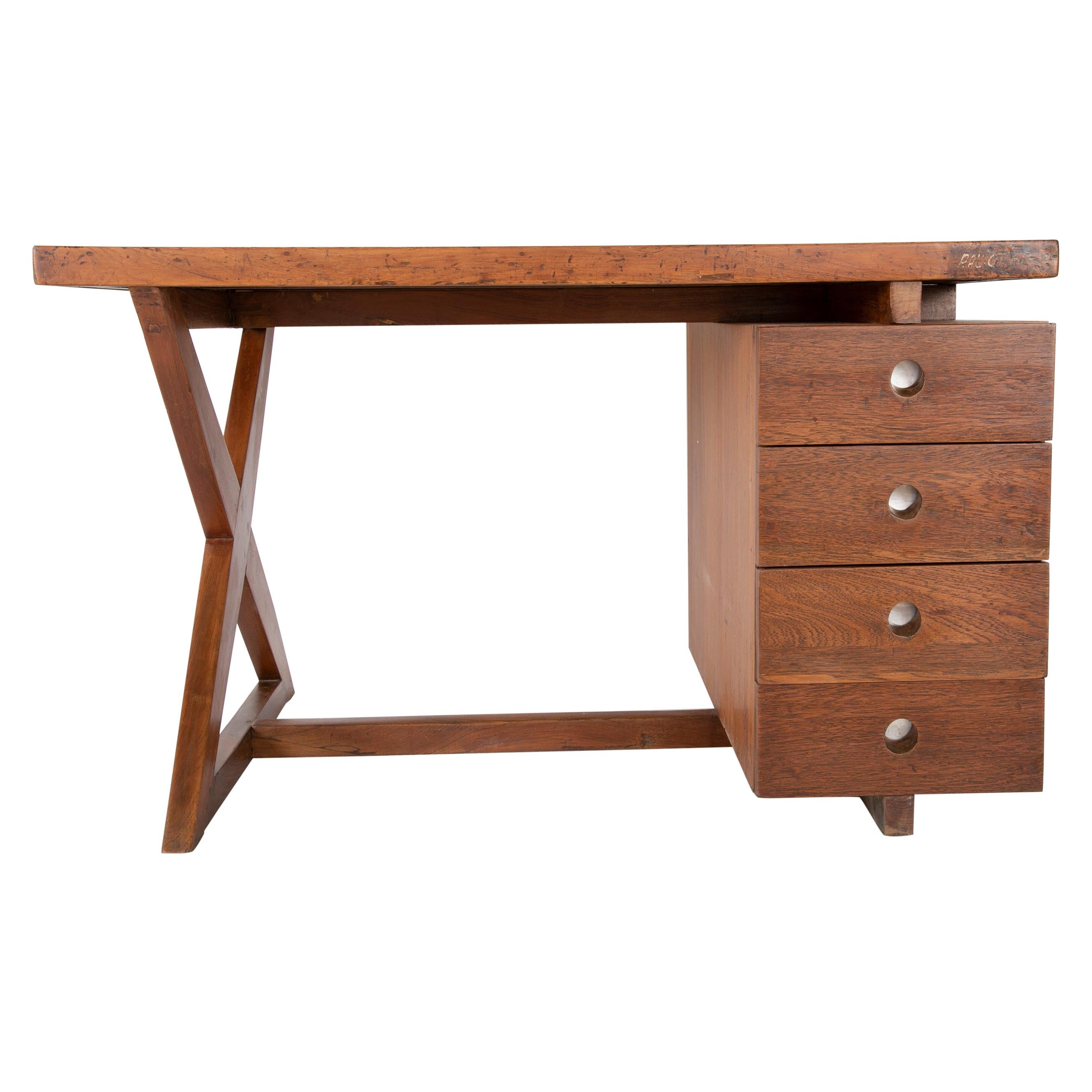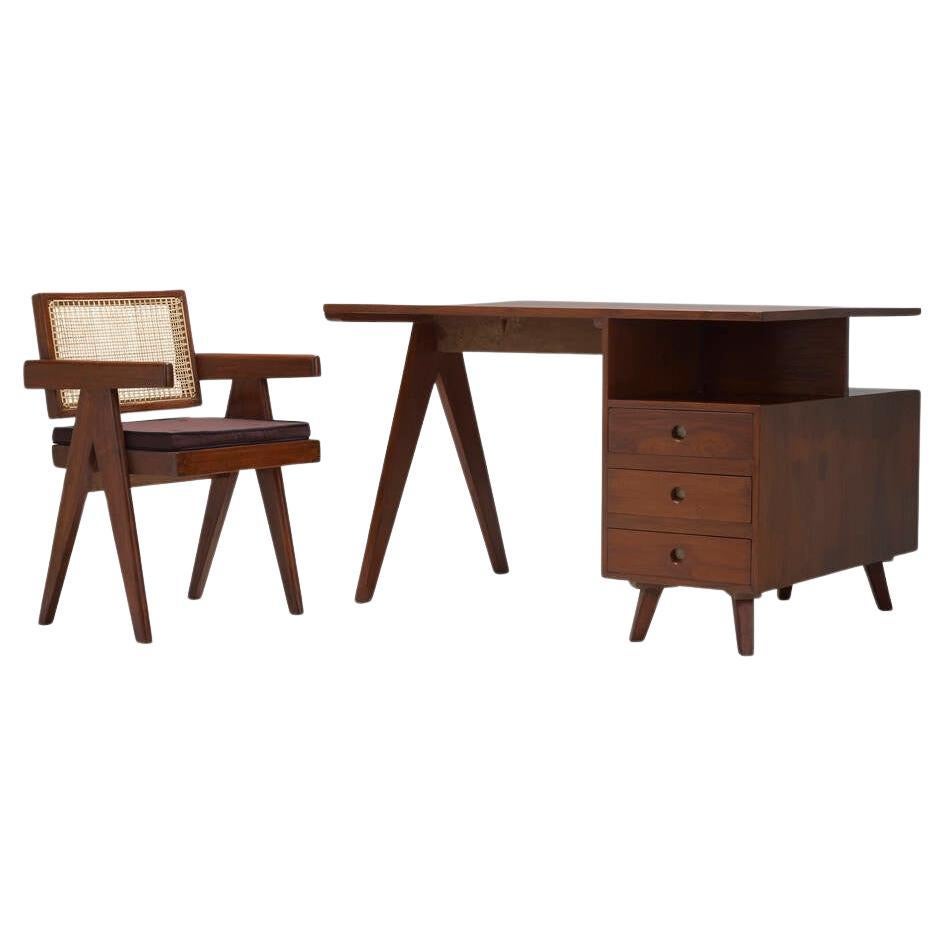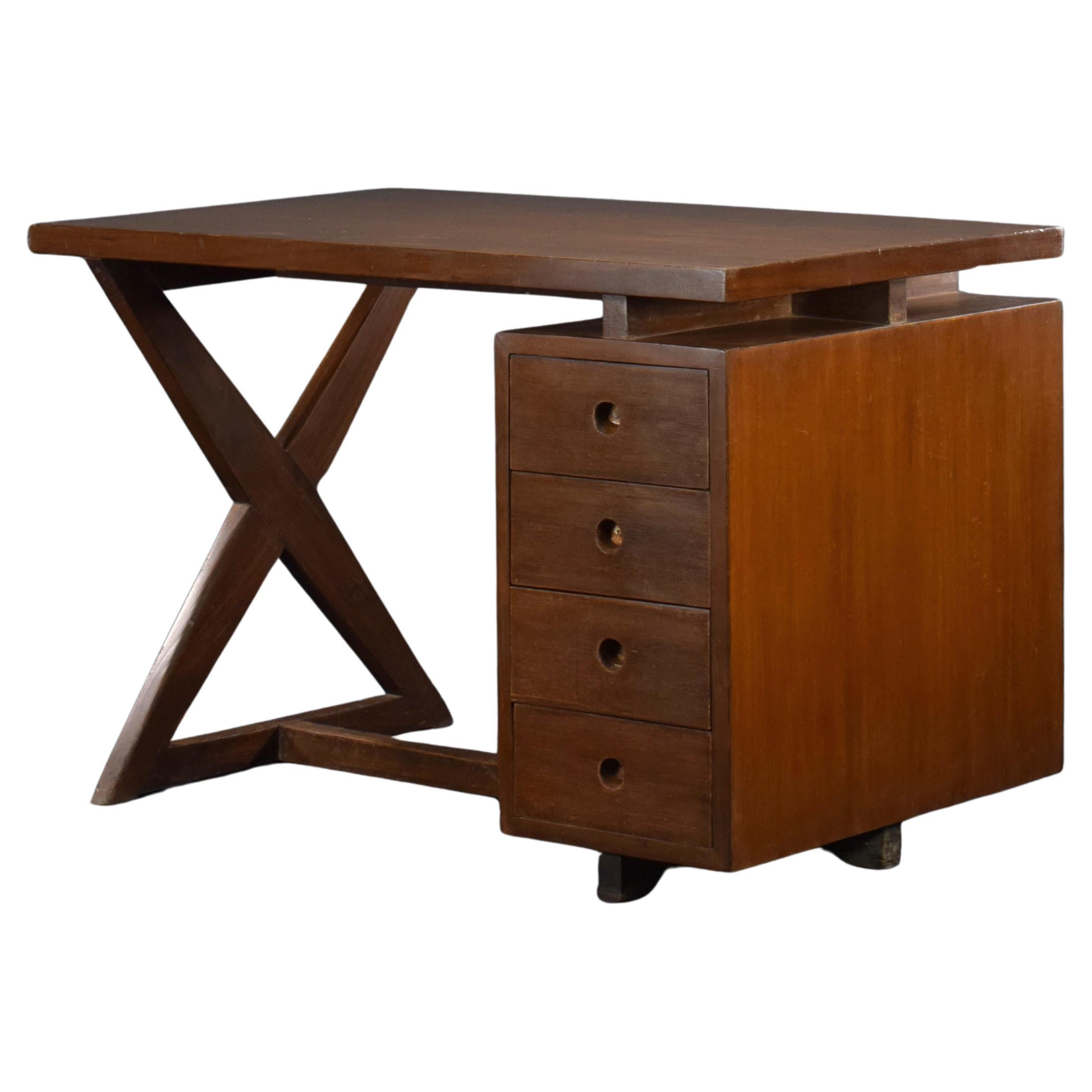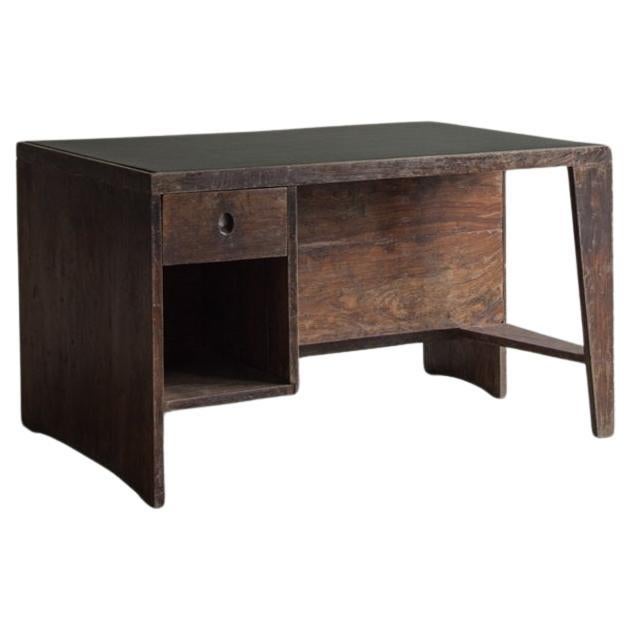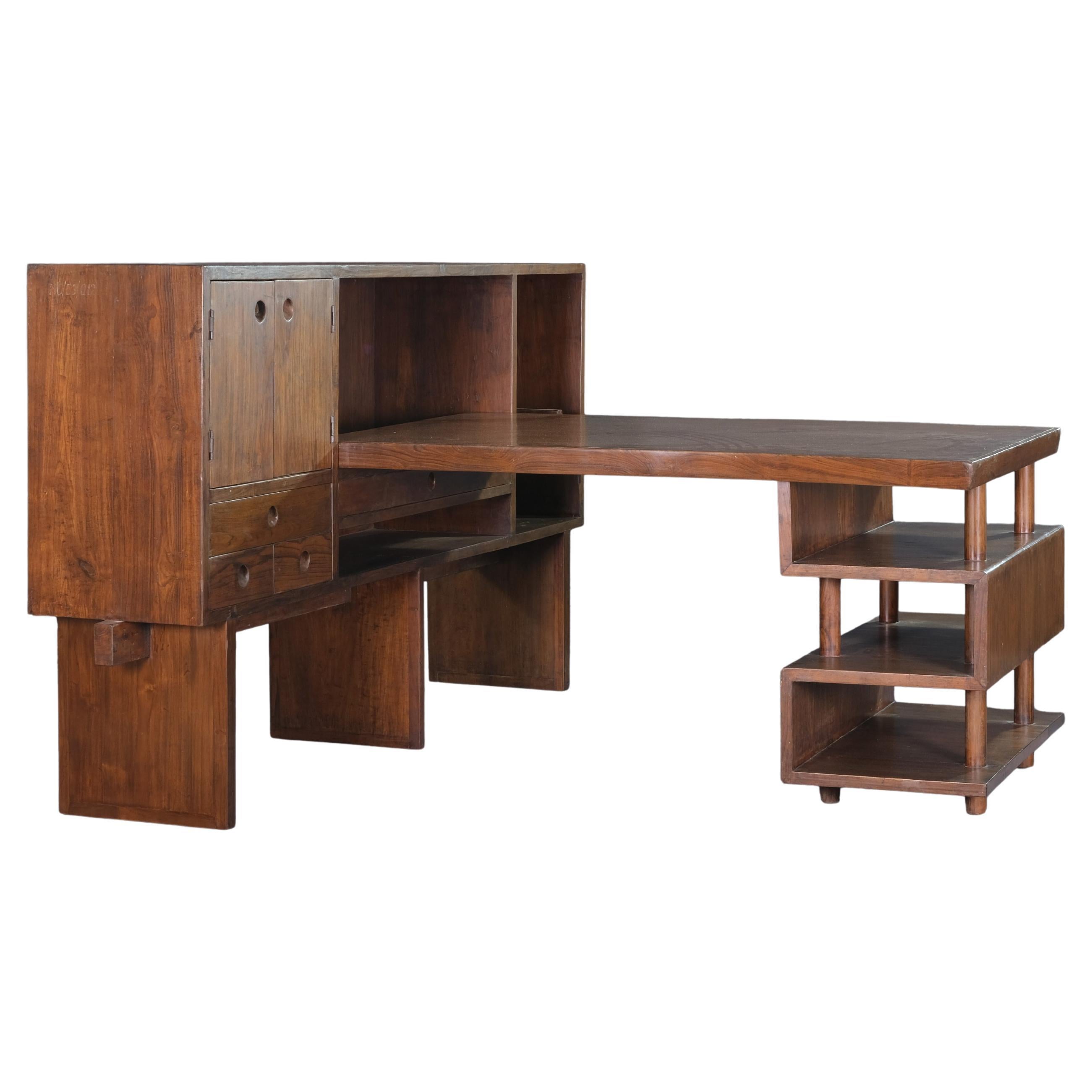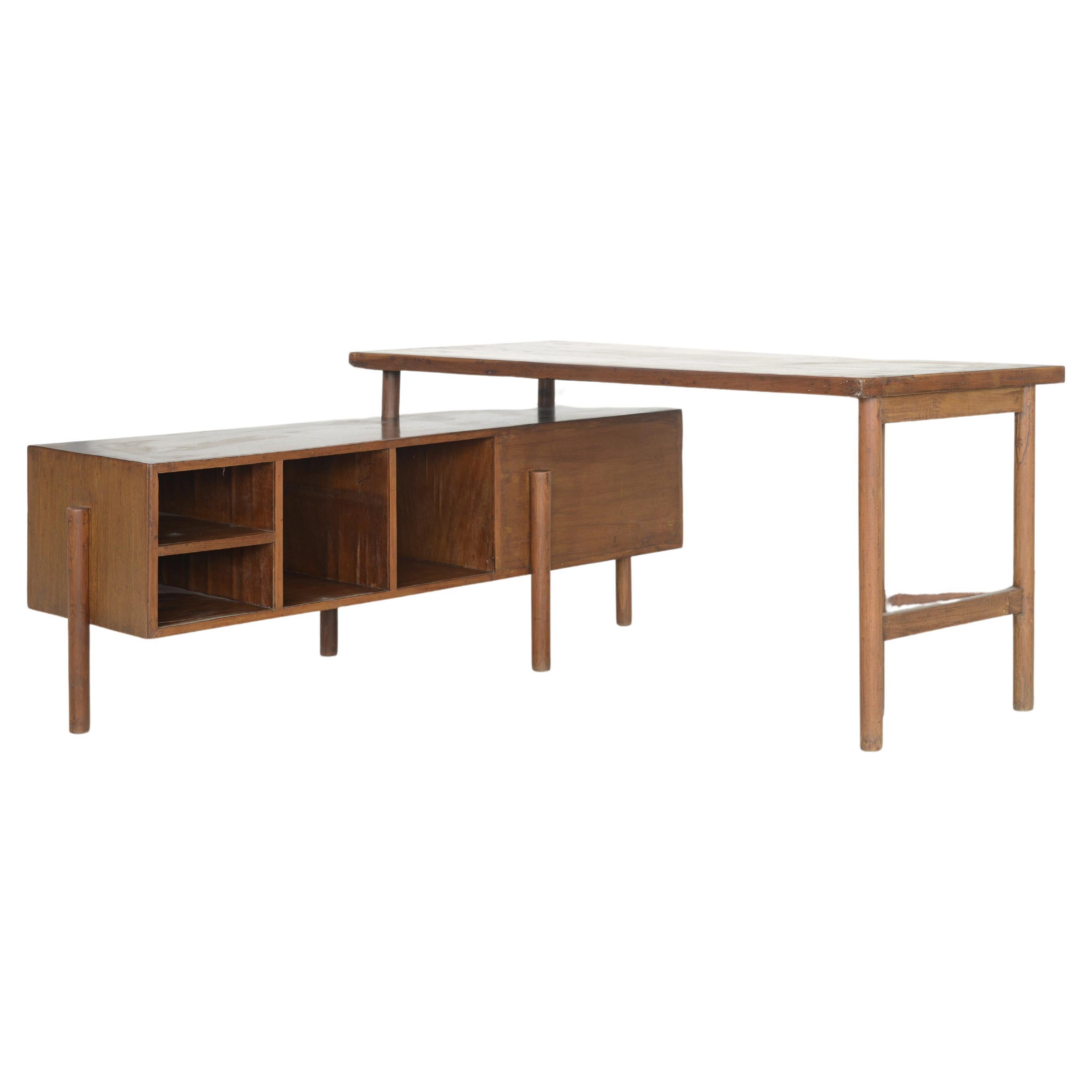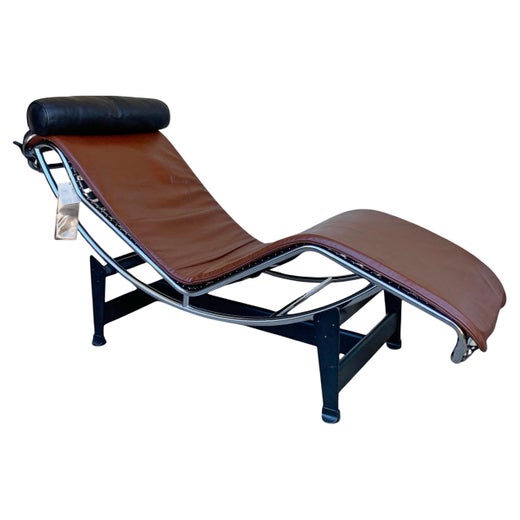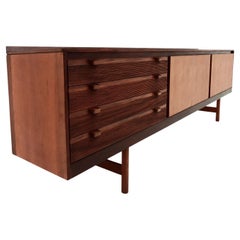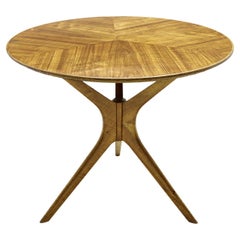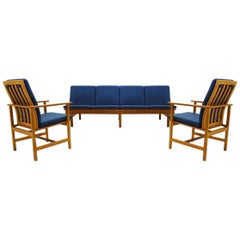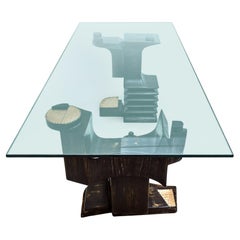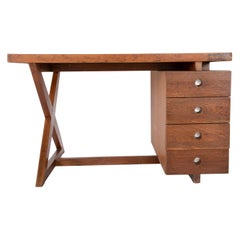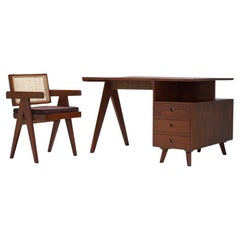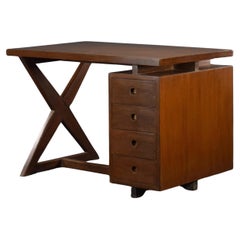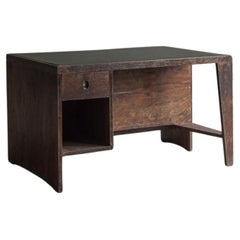Pierre Jeanneret X desk with a Model Pj Si 30A Committee Chair, Chandigarh, 60s
About the Item
- Creator:Pierre Jeanneret (Designer)
- Dimensions:Height: 29.93 in (76 cm)Width: 54.34 in (138 cm)Depth: 26.38 in (67 cm)
- Sold As:Set of 2
- Style:Mid-Century Modern (Of the Period)
- Materials and Techniques:
- Place of Origin:
- Period:
- Date of Manufacture:1960's
- Condition:Reupholstered. Wear consistent with age and use.
- Seller Location:Highclere, GB
- Reference Number:Seller: PJDesk1stDibs: LU4278237656242
Pierre Jeanneret
If his famed cousin and longtime colleague Charles-Édouard Jeanneret — better known as Le Corbusier — was the visionary, then Pierre Jeanneret was the member of the architecture and design team who got things done. In recent years, Jeanneret has emerged from Le Corbusier’s shadow, as collectors have discovered his simple and striking chairs, benches, coffee tables and other furniture creations.
Jeanneret studied at the École des Beaux-Arts in Geneva and after he graduated in 1921 he became a partner in Le Corbusier’s office in Paris. The pair collaborated on numerous residential projects, most notably the Villa Savoye, the iconic modernist house in suburban Paris completed in 1931.
Jeanneret also worked with the great Charlotte Perriand on the Grand Modele line of tubular metal furnishings that was a sensation at the annual Salon d’Automne design expo in 1929. A rift developed between Jeanneret and his cousin during World War II, as the former joined the French resistance, while Le Corbusier cooperated with the occupying authorities in Vichy. The two did not work together again until 1950, when Le Corbusier persuaded Jeanneret to help execute the master plan for the new city of Chandigarh in Punjab, India. Jeanneret lived and worked there until the final years of his life.
A hallmark of Jeanneret’s furniture designs is his great sensitivity to materials. In contrast to the tubular-steel chairs produced by Marcel Breuer and other members of the Bauhaus, the chromed metal pieces designed by Jeanneret and Perriand — including such as the now-classic LC4 chaise longue and the Grand Confort lounge chair — have a sensuous, relaxed and welcoming look. Conversely, while Jeanneret uses essentially geometric forms for his wooden seating pieces, they exude warmth by nature of the material.
One of Jeanneret’s first manufactured designs in wood is the Model 92 Scissors chair, licensed by Hans and Florence Knoll when they were touring postwar France. But Jeanneret’s finest work in furniture was done in Chandigarh, and these are the pieces that have earned him recent renown.
Crafted of teak, the Chandigarh designs range from low-slung lounge chairs and armchairs with cane seats to desks and tables, most with Jeanneret’s signature drafting compass-shaped legs. Many such pieces on the market today are refurbished, having been found by dealers languishing in scrapyards in India in the late 1990s. Chandigarh is now taking better care of its modernist heritage, making available Jeanneret works all the rarer.
Find authentic vintage Pierre Jeanneret chairs, case pieces, tables and other furniture today on 1stDibs.
- ShippingRetrieving quote...Shipping from: Highclere, United Kingdom
- Return Policy
More From This Seller
View AllVintage 1960s British Mid-Century Modern Sideboards
Teak, Sapele Wood
Mid-20th Century Italian Mid-Century Modern Coffee and Cocktail Tables
Cherry, Satinwood
Vintage 1950s Danish Mid-Century Modern Living Room Sets
Fabric, Oak
Mid-20th Century Italian Brutalist Dining Room Tables
Glass, Walnut
Mid-20th Century Danish Mid-Century Modern Dining Room Chairs
Steel
Vintage 1960s Danish Mid-Century Modern Dining Room Tables
Teak, Wenge
You May Also Like
Mid-20th Century Indian Mid-Century Modern Desks
Teak
Vintage 1950s Indian Mid-Century Modern Desks and Writing Tables
Aluminum
Antique Early 1600s Indian Mid-Century Modern Tables
Teak
Mid-20th Century Indian Mid-Century Modern Desks
Faux Leather, Wood, Teak, Cedar
Vintage 1960s Indian Mid-Century Modern Desks and Writing Tables
Teak
Mid-20th Century Indian Mid-Century Modern Tables
Teak
Read More
The 21 Most Popular Mid-Century Modern Chairs
You know the designs, now get the stories about how they came to be.
Vincent Van Duysen Imbues Minimalism with Warmth
The Antwerp-based designer lends his unique touch to homes, boutiques and offices in Belgium, the United States and Germany, as well as furniture for B&B Italia and Molteni.
